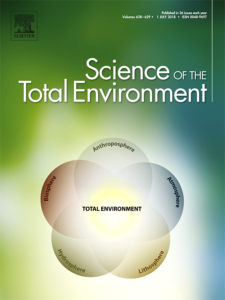 Researchers at Virginia Tech recently published a paper in “Science of the Total Environment” discussing how agricultural conservation practices (CPs) can mitigate the impacts of climate change on water quality.
Researchers at Virginia Tech recently published a paper in “Science of the Total Environment” discussing how agricultural conservation practices (CPs) can mitigate the impacts of climate change on water quality.
Scientists Moges Wagena and Zachary Easton chose to study the effects of climate change and the effectiveness of CPs in the Susquehanna River Basin, the largest source of nutrients and sediments to the Chesapeake Bay. Climate change could cause this area to have higher temperatures and precipitation, leading to more runoff and potentially more sediment and nutrient pollution into the Bay, causing areas of hypoxia as the weather gets warmer.
They wanted to see the effects of climate change on four CPs – buffer strips, strip-cropping, no-till, and tile drainage – to use in models for a historic time period (1990-2014) and for two future scenarios (2041-2065 and 2075-2099). Using a model called the Soil and Water Assessment Tool-Variable Source Area model (SWAT-VSA), they looked at the impact of climate change on hydrology, nitrate-N, total N, dissolved phosphorous, total phosphorus, and sediment export with and without CPs.
They found that installing CPs greatly reduced sediment exports, showing that “the greatest sediment load reductions were achieved when buffer strips and tile drainage were installed followed by no-till and strip-cropping.” The CPs also reduced nitrate exports, and they found that buffer strips were the most effective, followed by no-till and strip crop CPs. Their results showed that CPs were effective in reducing dissolved and total phosphorous exports when compared to historical and future periods without CPs.
The team also wanted to know if CPs installed on the 30% of agricultural land in the Susquehanna that generates the greatest runoff volumes would be more effective than installing CPs throughout the entire watershed. They found that “across almost all CPs there was very little difference between the two methods.” They found that tile drainage in widespread implementation reduced surface runoff and flow slightly more than installing the practice just in the targeted areas.
Climate change is expected to increase precipitation in the Bay watershed, leading to more sediment and nutrient pollution. This study shows that maintaining current CPs will not be enough to meet the water quality goals in the region as the climate changes. Installing specific practices based on CP performance and geographic location will be essential to improving water quality into the future.
